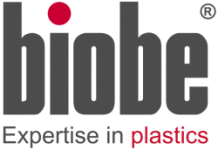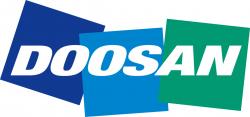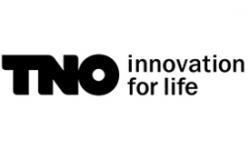This study describes the construction and operation of a non-metallic pilot CO₂ capture rig, built in the LAUNCH CCUS project to analyse oxidative solvent degradation in a continuous CO₂ capture process where metal concentrations in the solvent are constant. This can aid in creating better understanding of oxidative degradation of amine solvents, and can further help to evaluate the potential of building non-metallic CO₂ capture systems. The equipment and material selection for the non-metallic rig is discussed. A first campaign is conducted using MEA as the capture solvent, where the iron concentration in the solvent is gradually increased over the course of several weeks. In the start of the campaign, the rig could be operated according to its design specifications. This was not possible anymore in the final part of the campaign, due to leakages occurring at the stripper, and water balance issues. Liquid phase analysis of the solvent during the campaign shows the concentration of MEA, concentration of metals and concentration of major oxidative degradation products. Results from the analysis in this campaign should be analysed with caution, since the operation of the rig was not stable in the latter part of the experiment. The results from the experimental campaign give a first indication of the usefulness of operating such a non-metallic CO₂ capture rig to give further insights in oxidative degradation, while also giving insights where difficulties are in designing CO₂ capture systems without metal equipment. For a potential future campaign, the rig should be redesigned to fix some of the problems encountered in this first campaign, and it is recommended that in a next campaign, the rig is operated for several months without adding any metals to the solvent.
WP6 - Techno-economic Evaluation
The main objective of WP6 is a techno-economic evaluation that categorises a number of solvent degradation control options, highlighting the optimum concepts against the agreed benchmarks. This will contribute to the acceleration and maturation of capture technology with respect to solvent degradation management. WP6 will also determine the cost of solvent development based on results from the LAUNCH solvent qualification programme.
WP6 work is divided into 2 tasks:
Task 6.1 Techno-economic evaluation of solvent degradation control options
Task 6.2 Solvent qualification programme – cost of solvent development
Coordinator profile

Coordinator Name: Jonathan Slater
Coordinator Job Role: Principal Engineer CCUS, Doosan Babcock
Jonathan Slater is a Principal Engineer CCUS at Doosan Babcock. He graduated from the University of Nottingham in 2003 with a BEng (Hons) in chemical engineering and joined Doosan Babcock in 2005. He is a Chartered Engineer and Corporate Member of the Institution of Chemical Engineers. He has worked on numerous post combustion carbon capture projects as a process engineer specialising in process modelling of the carbon capture process and producing datasheets and associated calculations for main plant items. He has performed these tasks for several carbon capture FEED studies and the CCPilot100+ demonstration project. He also acted as test co-coordinator of the parametric test programme at the CCPilot100+. Jonathan has acted as the Process Lead for a number of US DOE-funded collaborative projects in both post combustion capture and oxyfuel combustion. One such project investigated carbon capture through utilisation of an enzyme enhanced solvent in which the key deliverables included a techno-economic assessment and an environmental, health and safety assessment of the process.
Results
D6.1.1a Construction and operation of a non-metallic pilot CO₂ capture rig and the influence of iron
D6.1.1b Feasibility of non-metallic materials
In this report, the focus will be towards the CAPEX implications of non-metallic equipment for the main equipment in a full-scale CO₂ capture plant, further assessing the feasibility of non-metallic materials of construction for CO₂ capture systems. Additionally, an analysis is performed regarding the effect of different solvent degradation rates on solvent replacement costs.
It has to be noted that this report focuses solely on the economic perspectives of implementing non-metallic materials and decreasing solvent degradation by using these materials. Detailed LCA’s are needed to assess the full-chain influence of using non-metallic materials of construction (MOC’s).
D6.1.2 Techno-economic evaluation and guidelines for solvent management
This report discusses the development of a software tool to perform techno-economic calculations on different solvent management strategies, compared to baseline operation, in order to assess the feasibility of these different solvent management strategies. As a basis for this analysis, the results from the other work packages of the LAUNCH project on the evaluation of different solvent management strategies are used as much as possible, and assumptions are made where necessary. The solvent management strategies that are evaluated are: Bleed and feed, reclaiming (thermal and ion-exchange) and oxygen removal (DORA and N₂ sparging).
D.4.1.2/D.4.4.1/D.5.1.2/D4.4.3/D6.2.1 Qualification, drawing and validation of the LAUNCH rigs as a tool for measuring solvent degradation
In this report, we have discussed the LAUNCH rig, a fully automated CO₂ capture plant designed to de-risk scaling-up of solvent technologies by representing the solvent degradation behaviour of full-scale plants. This plant is designed with a small capacity of 1 kg/h of captured CO₂, or 0.025 tonne per day. This small rig system, proposed before LAUNCH and further validated within the project, can be used to quantify the formation of degradation products over time. The drawing of a generic LAUNCH rig is given in the Figure below, and different design aspects are discussed. The rig is mobile, has a small footprint (6 m2) and can be easily connected at different industrial sites. This opens up the possibility to qualify solvents using different flue gases. The cost of the LAUNCH rig is estimated at 500 k€.
More About the Project
Objectives
The primary objective of the LAUNCH project is to accelerate the implementation of CO2 capture across the energy and industry sectors by developing novel solvents and establishing a fast-track, cost-effective de-risking mechanism to predict and control degradation of capture solvents.
Outcomes
The LAUNCH project will deliver the necessary knowledge and tools to allow CO2 capture plants to operate in a more controlled and cost-efficient way. The project will also provide solvent developers with the tools to assist in designing and validating novel solvents. By avoiding uncontrolled build-up of degradation products, LAUNCH will improve the performance and economics of CO2 capture.












